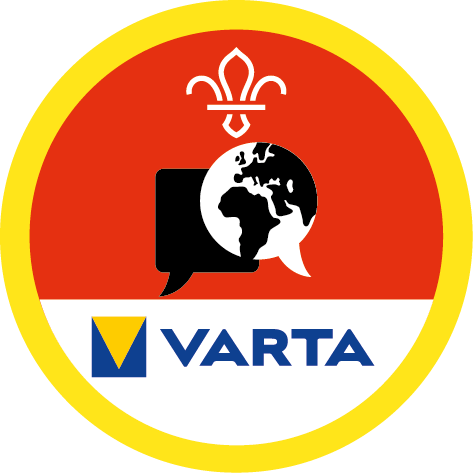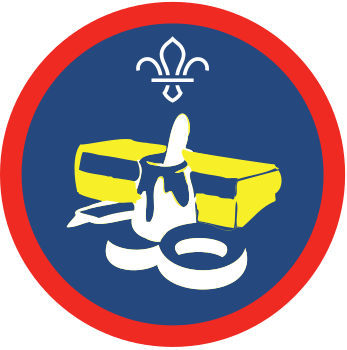
Recycled runway
You’ll need
- Scissors
- Aluminium foil
- Cardboard tubes
- Coloured pens or pencils
- Craft materials (for example, tissue paper, pipe cleaners, stickers)
- Device to play music
- Double sided sticky tape
- Elastic bands
- Clean items of recycling
- Glue sticks
- Masking tape
- Lollipop sticks
- PVA glue
- Sticky tape
- String
- Rulers
- Scrap paper
- Tissue paper
- Pens or pencils
- Bin bags
- Safety pins
- Fabric glue
- Spare, clean fabric, such as old clothes or bedding
- Sewing needles and thread
- Fabric paints or pens
- Hot glue gun (optional)
- Newspaper and magazines
Before you begin
- Use the safety checklist to help you plan and risk assess your activity. Additional help to carry out your risk assessment, including examples can be found here. Don’t forget to make sure all young people and adults involved in the activity know how to take part safely.
- Make sure you’ll have enough adult helpers. You may need some parents and carers to help if you’re short on helpers.
This activity could be run for International Women’s Day, which is celebrated on the 8 March every year. International Women's Day (IWD) is a global day celebrating the social, economic, cultural and political achievements of women. The day marks a call to action for accelerating women's equality. It can also be a great way to introduce young people to inspirational women. International Women's Day has occurred for well over a century, with the first IWD gathering in 1911 supported by over a million people. Find out more about Girls and Women in Scouts.
Setting up the activity
- You may want to lay out the runway and chairs before starting the session.
- A few weeks before this session, you could ask volunteers, young leaders and young people to bring in their clean, dry recycling to collect it to use for your outfits. You could also ask people to bring items with them on their night.
- Local craft shops and supermarkets may have some clean, dry recycling or unwanted items they could give you.
- Set up some craft tables and lay the items out, so everyone can see the materials before using them. Set up some scissors, paper, pencils, colouring pencils, sticky tape, paper clips, safety pins and glue, too.
Who’s Stella McCartney?
- Gather everyone in a circle.
- Ask if anyone has heard of Stella McCartney and who she is or what she does. Choose a few people to answer if anyone has put their hand up.
- Explain to the group that Stella McCartney’s a fashion designer. She’s a firm supporter of animal rights, environmentalism, and is particularly known for her use of vegetarian and animal-free alternatives in her work.
- Read out Stella’s story.
Stella McCartney’s an English fashion designer. She is a daughter of British singer-songwriter, Paul McCartney. Stella McCartney’s a firm supporter of animal rights, environmentalism, and is particularly known for her use of vegetarian and animal-free alternatives in her work. She uses no leather or fur in her designs. She became interested in designing clothes as a youth. At the age of 13, she designed her first jacket.
In September 2010, McCartney was appointed Team GB's Creative Director for the 2012 Olympics. It was the first time in the games' history that a leading fashion designer designed the sportswear for a country's team across all competitions for both the Olympic and the Paralympic Games.
In March 2012, the Team GB kit was publicly displayed. She continued in this role for the 2016 Summer Olympics, too.
In December 2018, she announced the launch of a new fashion industry charter for climate action, in collaboration with the United Nations (UN), to help fashion companies welcome sustainable business practices.
In August 2019, American singer-songwriter Taylor Swift teamed up with Stella to release a fashion line inspired by Swift's seventh studio album, Lover.
Design the outfits
- Everyone should gather in a circle and explain that today everyone is going to become a fashion designer, just like Stella McCartney.
- Tell everyone that they’re going to design and make an outfit or accessory out of clean, dry recycling, spare fabric and craft materials.
- Explain that at the end they’re going to make a runway and people can show off the item they’ve made, but only if they feel happy and comfortable to do so.
- People could make a hat, scarf, t-shirt, trousers, shoes, socks, dress, skirt, bag or anything else they can think of.
- Remind everyone that any item they make will need to go on top of the clothes they are currently wearing for the runway.
- Everyone should get a piece of paper, pencil and colouring pencils or felt tips. They then need to design their outfit, looking at the materials available.
Make the outfits
- When they’re ready, people can start to make the outfit. They may need to use sticky tape, a needle and thread, glue, or safety pins to help hold bits together.
- If you need to make it easier and quicker, people could just use bin bags, clean recycling and newspapers to create a simple new outfit, rather than using craft materials and fabrics.
- An adult volunteer could use a glue gun or sewing machine to help people secure items together. They could have a table set up for people to come to, and get the item glued or sewn.
- Everyone should finish putting their outfit together and, if you’ve used glue or paints, leave it to dry. You may want to run this over two sessions to give everyone time to finish their item.
- Once finished, everyone should give their outfit or item a name to be announced on the runway.
Running the runway
- Mark out a space running the length of the meeting space, around 2m wide, using masking tape, string or chalk.
- Put chairs either side of the lines for people to sit on. You could invite parents and carers in to watch. Alternatively, you can split everyone into two groups and get them to take it in turns. The group not walking down the runway would be watching, before switching over.
- Once everyone’s finished making their outfits, one group should sit down, and the other should gather in a line at the other end of the runway. They could use a room to wait in, depending on your meeting place layout, ensuring ratios and Yellow Card is adhered to.
- You may want to put on some music and introduce each person, as well as their item name.
- People could walk down the runway in pairs if they’re feeling a little nervous.
- People should walk to down the runway to the end. They may want to add a pose at the end and then walk back up the runway.
- Anyone watching could clap and cheer as people walk down. You could assign some people to be paparazzi, providing any photo permissions are in place. Make sure people are being supportive of one another the entire time.
- Once people have walked down the runway, switch groups and get them to walk the runway until everyone who’s wanted to have shown off their item.
- At the end, people can either keep or recycle their outfits.
Reflection
This activity was all about creating something new, out of something used, and doing something good for the environment, just like Stella McCartney does with her fashion. What did people make and how did they find making it?
Was it easy or hard? Were there any challenges? Did you have to redesign or rethink any bit of it as you were going along?
Safety
All activities must be safely managed. You must complete a thorough risk assessment and take appropriate steps to reduce risk. Use the safety checklist to help you plan and risk assess your activity. Always get approval for the activity, and have suitable supervision and an InTouch process.
- Scissors
Supervise young people appropriately when they’re using scissors. Store all sharp objects securely, out of the reach of young people.
- Rubbish and recycling
All items should be clean and suitable for this activity.
- Hot tools
Tools, such as irons and glue guns, produce a lot of heat. Never touch the hot metal parts. Use them under adult supervision and on a suitable surface, protecting it if necessary. Never leave hot tools unattended and be careful near combustible materials such as wood, textiles, or paper. Make sure there’s a fire extinguisher and a first aid kit (with items to treat burns) nearby. Always follow the manufacturer’s instructions for proper use. You may need to use gloves and safety goggles with glue guns.
- Glue and solvents
Always supervise young people appropriately when they’re using glue and solvent products. Make sure there’s plenty of ventilation. Be aware of any medical conditions that could be affected by glue or solvent use and make adjustments as needed.
- Sharp objects
Teach young people how to use sharp objects safely. Supervise them appropriately throughout. Store all sharp objects securely, out of the reach of young people.
To make it harder, you could just use spare fabrics and allow people to practice sewing to put something together.
To make it easier, you could ask groups to create a simpler accessory, or you could also design items for a Scout mascot or a teddy from home, so they’re smaller.
To make it easier, people could also upcycle an existing item of clothing or accessory, rather than creating something from scratch. They might add cool fabric shapes to a pair of jeans, add buttons to a bag, use fabric pens to decorate a t-shirt or pair of socks, or use fabric glue to add sequins or gemstones to a headband.
If anyone needs help or struggles with fine motor skills, give them the opportunity to work in pairs, with a young leader or an adult volunteer. Alternatively, swap out the items for something easier to handle.
People who struggle with making choices could find all the options a bit overwhelming, so they might need extra support or to work with a young leader/volunteer to be able to create their piece.
If anyone needs support in using craft items, allow them to work with someone else who can help them.
All Scout activities should be inclusive and accessible.

